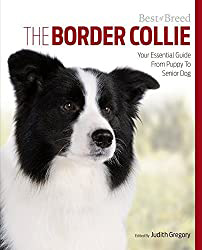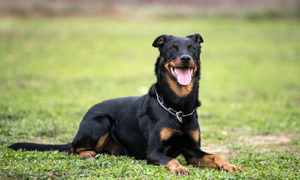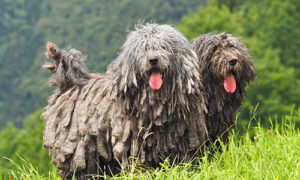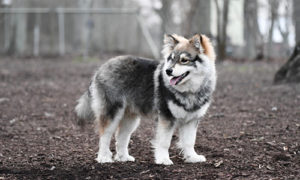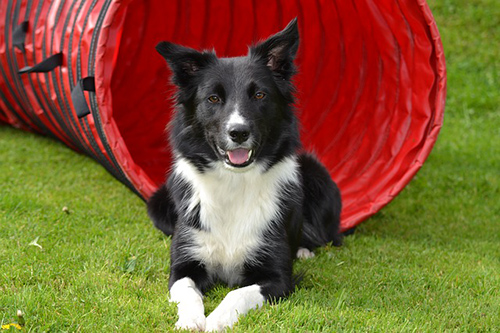
The Border Collie was initially known as the Scotch Sheep Dog. Breeders developed them from local strains of drover dogs along the border of England and Scotland, hence the eventual name Border Collie. Documentations of dogs resembling this breed dates back to the mid-1800s.
Breeders selectively bred them for working ability, trainability, and stamina. The Border Collie entered the AKC’s Miscellaneous Class in 1955 and gained full recognition forty years later. Intelligent, athletic, and focused, today, the Border Collie is considered among the premier breeds for dog sports.
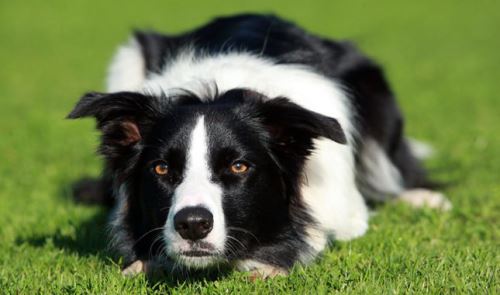
This dog is medium-sized, well-muscled with balance, good bone, and a smooth, pleasing outline. Its athletic confrontation is matched by its keen expression, produced by wide-set, oval-shaped eyes and sensitive, mobile ears. When working, the Border Collie is famous for its distinctive style of crouching with the head down, and the tail carried low or level with the back.
Border Collie Breeder Facts
Activity level: A fenced yard for this dog is essential. However, running in a fenced yard is not sufficient exercise for a dedicated working dog like this.
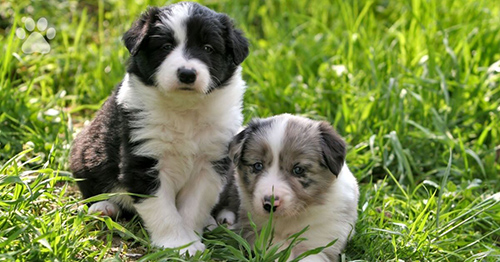
- POPULARITY: Popular
- FAMILY: Livestock, Herding
- AREA OF ORIGIN: Great Britain
- DATE OF ORIGIN: 1800s
- ORIGINAL FUNCTION: Sheepherder
- TODAY’S FUNCTION: Sheepherder, herding trials, obedience
- OTHER NAME: None
Border Collie Temperament
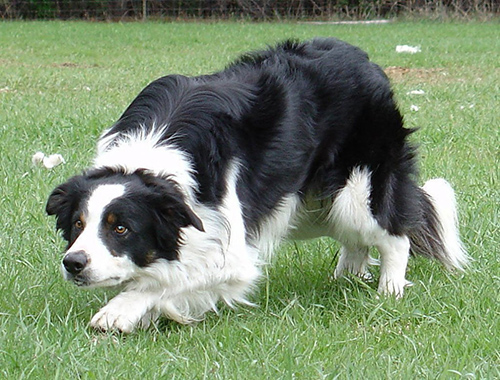
Dog enthusiasts consider the Border Collie one of the most intelligent breeds, but this doesn’t mean a minimal need for training. These dogs are strong-willed and easily bored. They observe and analyze everything they encounter, are incredibly reactive to sound and movement, and have a strong herding instinct.
Provide consistent training, socialization, and plenty of personal attention, as Border Collies are very devoted and want to be in every activity. They also can be quirky, moody, and territorial and tend to be reserved toward strangers. Also, introduce them to other dogs under supervision.
Border Collie Health Issues
- Major concerns: CHD
- Minor concerns: PRA, lens luxation, CEA, PDA, OCD, deafness, seizures, hypothyroidism
- Occasionally seen: cerebellar abiotrophy, ceroid lipofuscinosis, compulsive behavior
- Suggested tests: hip, eye, (thyroid), (DNA for CEA)
- Life span: 10-14 years
- Weight: 30-45 pounds
- Height: male: 20-23 inches; female: 18-21 inches
Grooming
Weekly brushing, with more frequent brushing during times of seasonal shedding.
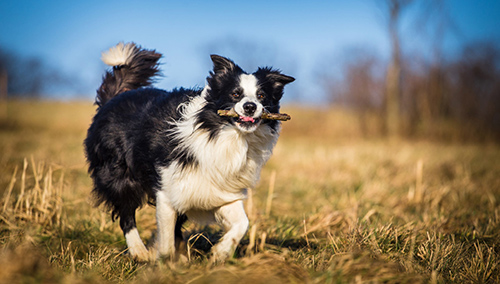
Coat: Rough and smooth varieties, each with a dense, weather-resistant double coat. The coarser outer layer may be straight or wavy; the undercoat is soft, short, and thick. The rough coat is medium length with feathering on the forelegs, haunches, chest, and underside. The smooth coat is short and slightly coarser, with slight feathering in these areas.
Color: Most prevalent is black with white markings, but all colors or combinations are allowed in competition except solid white. This includes solid shades, biand tricolors, merle, and sable.
Border Collie Buyer’s Guide and Breeder Advice
Find a responsible breeder who selects dogs for health, herding instinct, temperament, and soundness.
Parent club: Border Collie Society of America; founded in 1993
Regional clubs: You can find BCSA affiliated clubs on the BCSA’s website. Rescue: Find rescue information on the club’s website under “rescue.”

